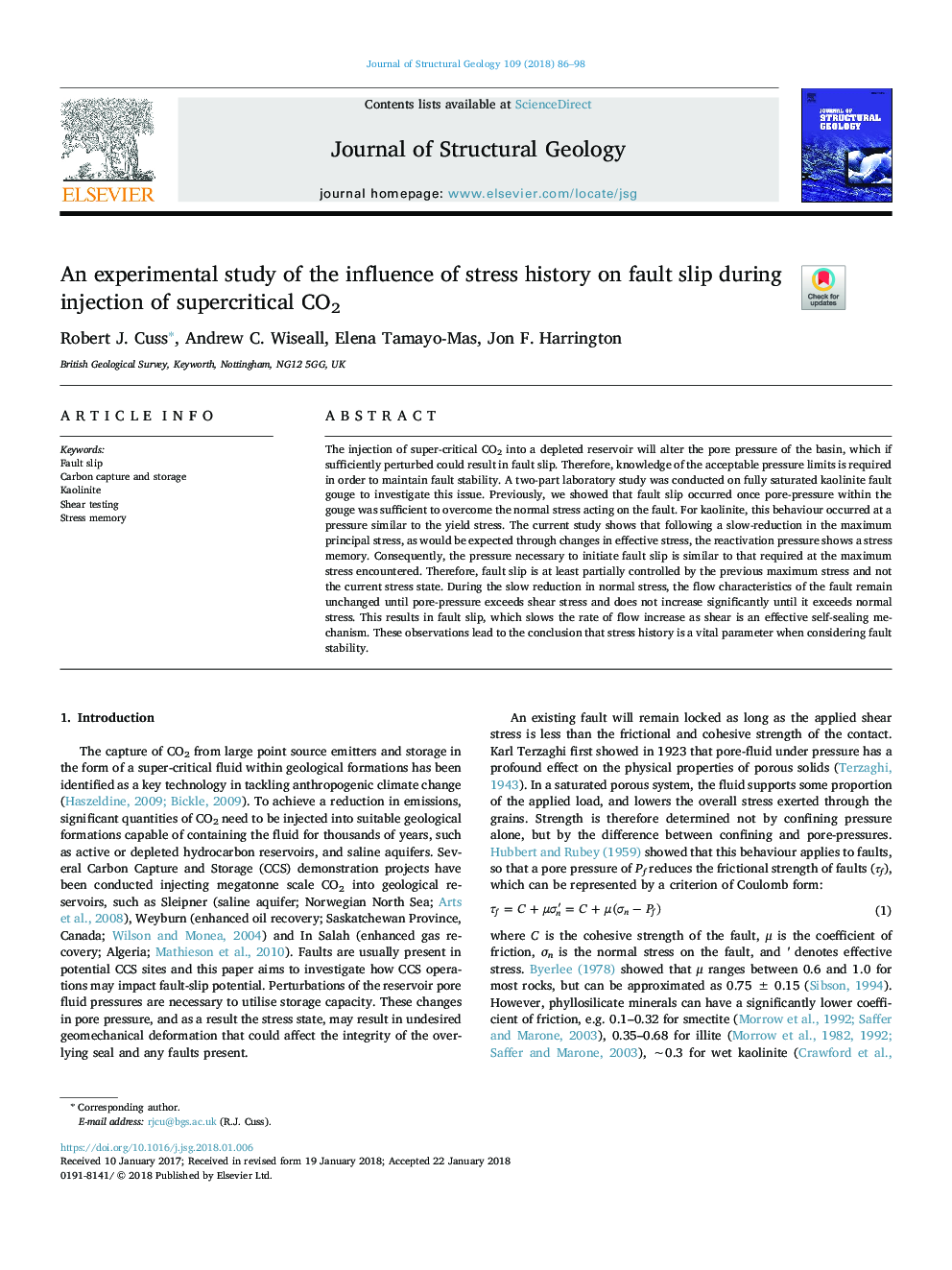| Article ID | Journal | Published Year | Pages | File Type |
|---|---|---|---|---|
| 8914457 | Journal of Structural Geology | 2018 | 13 Pages |
Abstract
The injection of super-critical CO2 into a depleted reservoir will alter the pore pressure of the basin, which if sufficiently perturbed could result in fault slip. Therefore, knowledge of the acceptable pressure limits is required in order to maintain fault stability. A two-part laboratory study was conducted on fully saturated kaolinite fault gouge to investigate this issue. Previously, we showed that fault slip occurred once pore-pressure within the gouge was sufficient to overcome the normal stress acting on the fault. For kaolinite, this behaviour occurred at a pressure similar to the yield stress. The current study shows that following a slow-reduction in the maximum principal stress, as would be expected through changes in effective stress, the reactivation pressure shows a stress memory. Consequently, the pressure necessary to initiate fault slip is similar to that required at the maximum stress encountered. Therefore, fault slip is at least partially controlled by the previous maximum stress and not the current stress state. During the slow reduction in normal stress, the flow characteristics of the fault remain unchanged until pore-pressure exceeds shear stress and does not increase significantly until it exceeds normal stress. This results in fault slip, which slows the rate of flow increase as shear is an effective self-sealing mechanism. These observations lead to the conclusion that stress history is a vital parameter when considering fault stability.
Related Topics
Physical Sciences and Engineering
Earth and Planetary Sciences
Geology
Authors
Robert J. Cuss, Andrew C. Wiseall, Elena Tamayo-Mas, Jon F. Harrington,
